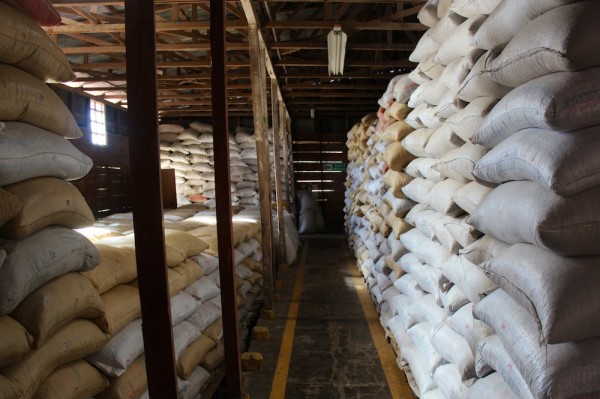The United States Department of Agriculture has released its latest estimates for annual global coffee production, predicting a 1.5 million total drop to 147.8 million bags in 2014/15, despite rising demand.
The USDA’s semiannual announcement is a major speculative force, and the downward estimate is likely to increase uncertainty what has already been a highly volatile market based on unclear data. That said, the global production total has only been revised downward by 400,000 bags since the USDA’s previous estimates in December.
(related: Sustainable Values Combined with Market Tools: A Future for Specialty Coffee)
Of course, much of the decline is attributed to weather factors in Brazil, where the harvest is currently underway, although slight rebounds in Colombia, Central America and Mexico due to leaf rust (la roya) response are helping improve global inventory to meet record-high exports and demand. Following is a region-by-region breakdown of some of the main points from the report:
Brazil
- Brazil’s Arabica output is forecast to drop a second consecutive year to 33.1 million bags, breaking the biennial cycle for the first time in over two decades.
- The combined Arabica and Robusta harvest is forecast at 49.5 million bags, down 4.2 million from last year.
- Prolonged drought as well as high temperatures in Minas Gerais and Sao Paulo (about 80 percent of Arabica production) adversely affected the filling and development of beans.
- Parana’s Arabica output is forecast 800,000 bags lower following extensive tree removal due to last year’s frost damage.
- The Robusta harvest is forecast at a record 16.4 million bags as output rebounds 2.1 million from last year’s weather related shortfall in Espirito Santo.
- Consumption remains flat after two decades of steady expansion.
Vietnam
- Vietnam’s production is forecast at a record 29.3 million bags, up 1 percent.
- Exports are forecast 2 million bags higher to a record 27.0 million, reversing the recent inventory buildup.
Colombia
- Colombia’s production is forecast up 1.0 million bags to 12.0 million on higher yields.
- Continued growth is expected following 7 years of below-average output due to the spread of coffee rust and coffee cherry borers.
- The rust initially affected as much as 40 percent of the planted area, but has since declined to less than 10 percent following an aggressive tree renovation program.
- Exports are forecast to gain 300,000 bags to 10.5 million on increased shipments to the United States and Europe.
Central America and Mexico
- After two years of declining output caused by coffee rust, the region is forecast to increase 870,000 bags to 16.2 million.
- Honduras is expected to add 400,000 bags to 5.0 million as rust-resistant trees from recently renovated land reach maturity.
- Guatemala is forecast to rebound 200,000 bags to 3.6 million on improving yields.
- El Salvador, where production plunged 60 percent last year, is forecast to rebound 175,000 bags to 675,000 as more growers implement control measures.
- Approximately 40 percent of Central America and Mexico exports are destined for the United States, followed by 35 percent to Europe.
Indonesia
- Indonesia’s production is forecast to drop 600,000 bags to 8.9 million. For the second consecutive year, excessive rain during cherry development lowered yields.
- Exports are forecast to decline 600,000 bags to 5.4 million on less available supplies.
India
- India’s production is forecast to add 100,000 bags to 5.1 million on higher Robusta output in Karnataka, the largest coffee producing state.
- Arabica is forecast modestly lower as it enters the off-year of the biennial production cycle. Bean exports are forecast unchanged at 3.7 million.
In addition to production estimates, the USDA also released some import estimates for the European Union and the United States, which represent the top two importing regions in the world, respectively:
European Union
- The European Union accounts for nearly half of the world’s bean imports and is forecast to increase 500,000 bags to a record 46.0 million.
- Top suppliers include Brazil (29 percent), Vietnam (24 percent) and Indonesia (6 percent).
- Ending stocks are forecast to remain at 10.5 million bags after trending lower over the last decade.
The United States
- The United States imports the second-largest amount of coffee beans and is forecast to increase slightly to a record 25.0 million bags as consumption continues to rise.
- Top suppliers include Brazil (25 percent), Vietnam (18 percent) and Colombia (13 percent).
- Ending stocks are forecast unchanged at 5.7 million bags.
Nick Brown
Nick Brown is the editor of Daily Coffee News by Roast Magazine.
Comment
1 Comment
Comments are closed.







Vietnam, please don’t produce more. You’re going to make coffee farmers all over the world go broke, like you already did in the mid 90s.